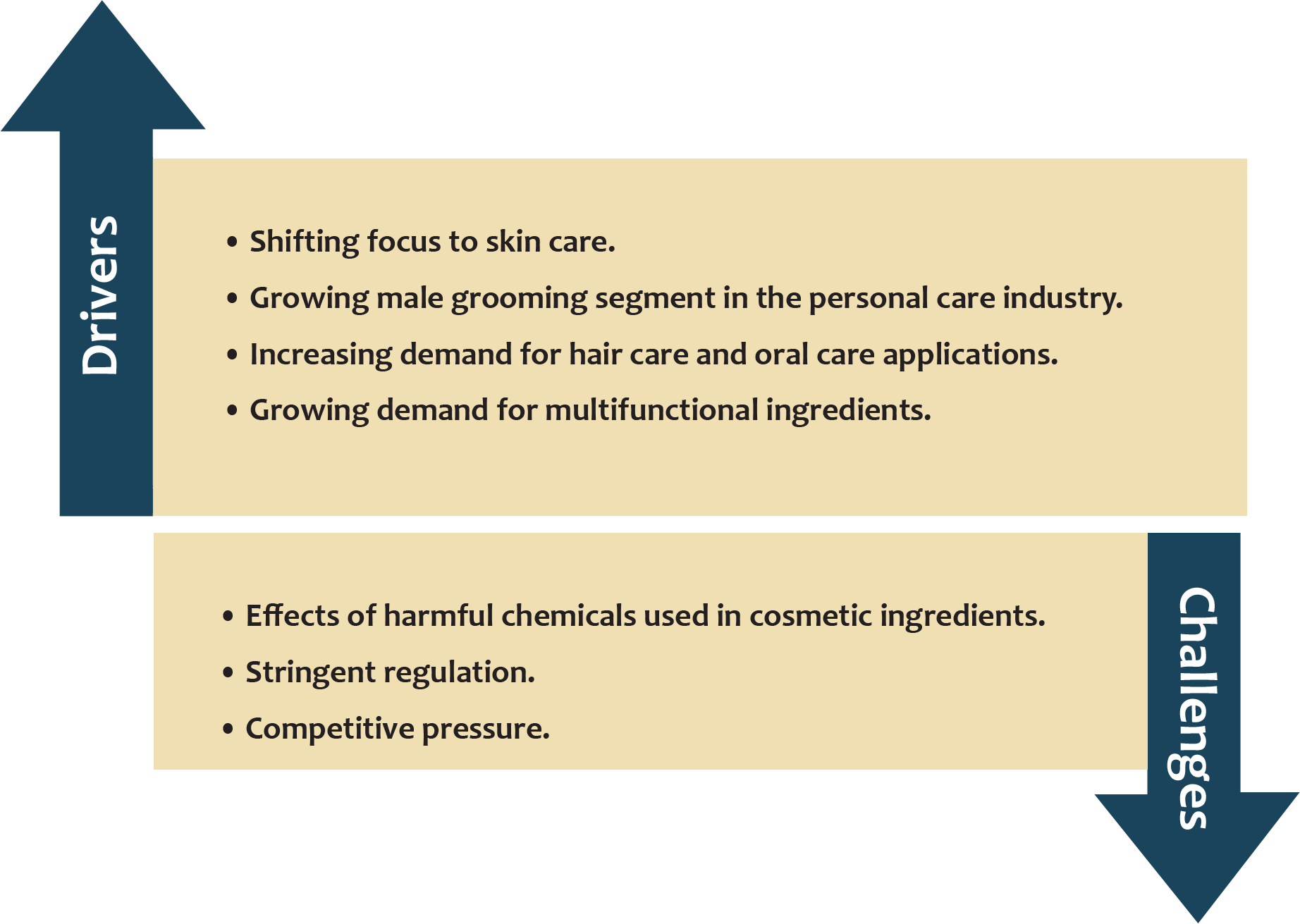business and market view
A regular column featuring excerpts from BCC Research reports on industry sectors involving the ceramic and glass industry.

Ceramic materials in cosmetic and toiletry products
By BCC Publishing Staff
The global market for cosmetic and toiletry ingredients reached a value of $24.4 billion in 2020 and is expected to grow at a compound annual growth rate (CAGR) of 4.2% to reach $30.5 billion by 2026.
The cosmetic and toiletry ingredient industry is considered a segment of the overall chemical industry. This section of the chemical industry represents approximately 20% of the total chemical industry output, producing more than 5,000 different types of chemicals and compounds.
The chemicals and compounds used in cosmetics and toiletries can be classified based on the function they serve (Table 1). Among these categories, ceramic materials can be found to serve several functions.
Absorbents and anti-caking agents. Various types of silicon dioxide and magnesium silicates are used to absorb moisture and prevent caking in makeup.
Abrasives. Calcium phosphate and alumina were once used as the abrasive base of toothpastes, but they had the disadvantage of reacting with other chemical ingredients. Today, the common abrasives are silicon dioxide and titanium dioxide.
Colorants. Titanium dioxide is a white pigment that, when combined with naturally mined and synthetic iron oxides, can produce a range of colors for almost every skin type. Zinc oxide, which becomes a fluffy white powder when refined, adds a bright white color to creams, lotions, and face powders. Pearlescent pigments, or pearls, that sparkle and reflect light are often prepared by precipitating a thin layer of color onto thin platelets of mica.
Fillers. Fillers are inert, generally inexpensive materials that are used to extend and fully develop colors. Common filler materials include kaolin, talc, silicon dioxide, and mica.
Light protection. Both titanium dioxide and zinc oxide can reflect, absorb, and scatter ultraviolet rays. For this reason, they are common ingredients in sunscreen products.
Occlusives. Occlusive ingredients create a physical barrier on top of the skin to keep skin moist and hydrated. Zinc oxide is an occlusive ingredient that is used to create barrier creams.
Synthetic fragrance production. To create synthetic odoriferous compounds for use in perfumes, oxidation is a main reaction used. Manganese dioxide is often used in the oxidation process.
Nanomaterials are starting to make their way into cosmetic and toiletry products. For example, nanoscale particles of titanium dioxide and zinc oxide are used in sunscreens to increase the ability of the product to block ultraviolet radiation. Additionally, different types of nanoclays and nanocomposites are being produced and sold as barrier films.
In the future, molecular manufacturing could be employed to produce more specific and better functioning nanoparticles, which could expand the use of nanoparticles in hair and skincare products. More factors influencing the global market for cosmetic and toiletry ingredients can be seen in Figure 1.

Figure 1. Drivers and challenges in the cosmetic and toiletry ingredient industry.
About the author
BCC Publishing Staff provides comprehensive analyses of global market sizing, forecasting, and industry intelligence, covering markets where advances in science and technology are improving the quality, standard, and sustainability of businesses, economies, and lives. Contact the staff at Helia.Jalili@bccresearch.com.
Resource
BCC Publishing Staff, “Global markets for chemicals for cosmetics & toiletries” BCC Research Report CHM018J, January 2022.
